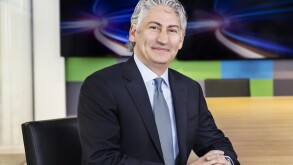As explained by the authors in their second article in this series, setting or testing transfer prices via the TNMM will increasingly be challenged by tax authorities around the globe. Based on a widened interpretation of local entrepreneurial contributions, tax authorities will demand more sophisticated methods. In turn, they will reject one-sided TP methods that do not consider the contributions to overall value-chain profitability by the respective local entity.
This is an unfortunate development for multinational enterprises who will enter a new phase of uncertainty. Requests to consider the individual contributions by each legal entity to overall profitability will considerably increase tax compliance costs and risks. It is inevitable that some tax authorities will ask for TNMM to be backed up by a profit-split analysis. This will increase tax disputes, as tax authorities are likely to cherry pick. For example, authorities are likely to be enthusiastic about profit-split solutions when there is a lot of profit to be shared. On the other hand, in low-profit or loss situations, they may step back and claim that a minimum return for local functions should be guaranteed.
With this in view, it is extremely advisable for taxpayers to preserve at least two key elements of previously applied models:
Start by using an ex-ante profit split for the price setting (as allowed by the OECD); and
Embed the outcome of the profit-split analysis in an enhanced TNMM target margin for the slightly less-complex entity, which has traditionally been benchmarked through TNMM.
NERA has developed a five-step approach for the necessary economic analysis. We illustrate the approach with a case study: in a Germany-based specialty chemicals group, the HQ conducts all innovative product research and development (R&D)-related activities and steers the manufacturing footprint. Asian sales companies sell the output to industrial customers on a project-by-project basis. The local sales support includes the local technical on-site embedding of chemical solutions into highly complex manufacturing operations of the industrial customers. Customer relations are usually long-term and based on mutual trust.
Analyse the nature of the activities:
We found that both technical product-specific features and local tailored manufacturing support are recognised as key value elements. While the HQ is clearly the key driver in the overall business, it is also clear that sales companies provide unique technical services and are the trusted point of contact for the industrial customers. They cannot be compared to standard routine distributors.
Remunerate routine:
In line with traditional residual profit analysis, we identified the remuneration of the routine elements of both HQ and local sales companies based on budgeted data. Thereby we derived an entrepreneurial residual profit.
Residual profit analysis:
The concept of relative bargaining power as recommended by the OECD suggests both parties may have to consider credible outside options (i.e. the TP analysis must analyse what each party could do without the other).
There are few plausible alternatives for the sales companies because other IP-owning groups usually have their own sales arms. On the other hand, from the HQ perspective, it could always build up a new sales organisation in the absence of the existing one. The relevant question is how much time and investment it would cost to do so. We considered various factors, including the availability of qualified local personnel, the existing contracts with customers (which last several years), the time to form the teams and establish them with the business-to-business (B2B) customers who would not accept any disruptions in their manufacturing operations, and the risk they might select competitors as component suppliers. In our case study, weighting the different costs, opportunity costs, and risks then yielded residual profit share for the HQ of 60% to 90% dependent on the country.
Risk-adjustment:
Finally, we adjusted the residual profit share by comparing different types and magnitudes of risks taken by the different parties. This is translated into a risk premium to reflect the different volatilities. In this case it slightly increased the HQ's profit share.
Translation into transfer prices:
Finally, we converted the proposed risk-adjusted residual profit sharing into a country-specific target margin for the sales company that covers both routine and non-routine elements.
This enhanced TNMM model offers similar advantages to taxpayers as traditional ones that focus only on routine functions. It involves clear target ranges that can be tracked and achieved through intra-year price adjustments. The main change is that margins will fluctuate more between countries and over time. However, this is backed up by a unified analytical framework that is consistently applied and provides tax authorities with an overall view on the value-chain contributions.












